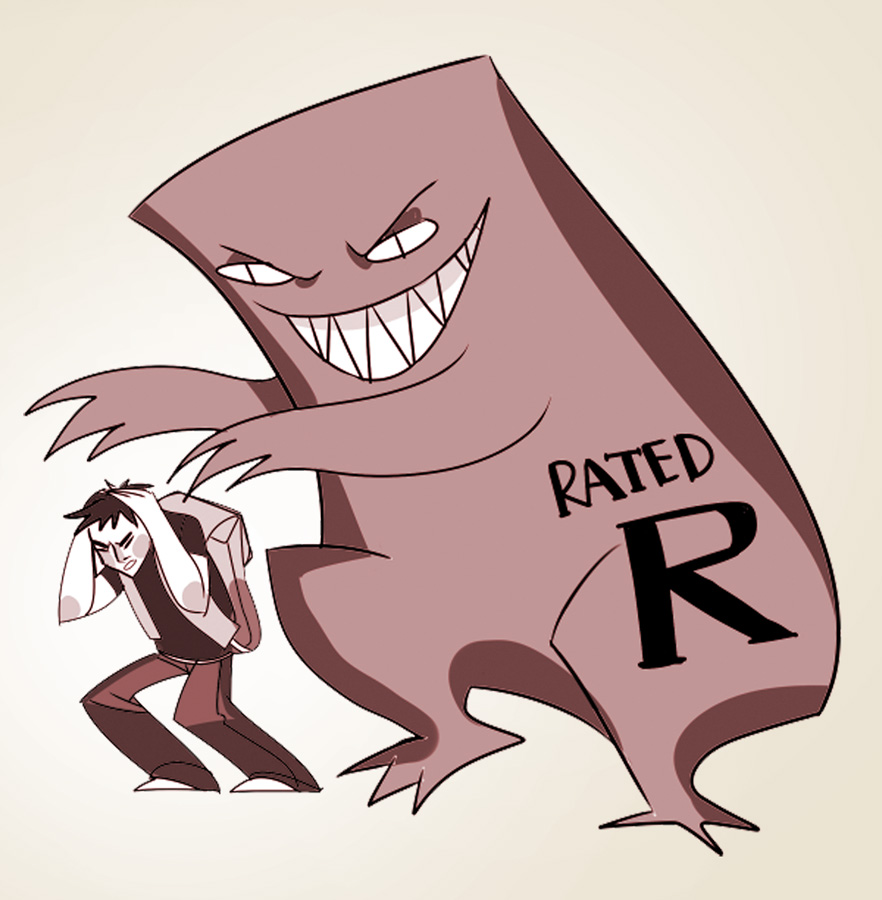

Sophomore Ben Maisonpierre sat at his desk while the girl next to him had her face contorted. The sophomore Modern World History class was watching “Schindler’s List,” a controversial Holocaust movie, as part of their World War II curriculum. “Everyone was silent,” says Maisonpierre. “It was one of the first times in class when you didn’t hear everyone talking.”
Arguably disturbing or graphic content is shown in many Aragon classes. “We have watched ‘Schindler’s List,’” says sophomore Emma Wynn. “Also in history we read about the atomic bombs. [They caused] the skin to slip off of Japanese citizens.”
Maisonpierre recounts other examples of disturbing content at Aragon. “Pictures and videos in Health class are sometimes graphic in content. Watching this stuff with your peers and a teacher in the room makes it especially awkward.”
However, the educational benefits of showing graphic content are known throughout much of the Aragon student body. Some consider it a necessary part of a wholesome high school lesson. “It’s sometimes a good thing to show alarming material at school in order to get the point across, especially in History,” says junior J.J. Meyer. “You need to experience the historical event to understand it.”
The powerful effect of graphic material in a classroom environment is undeniable, especially when so many teachers at Aragon incorporate it into their curriculum. “Anytime we watch war footage it is always potentially graphic,” says history teacher Jennifer Seif. “Later, we watch ‘The Lives of Others’ for the Cold War.”
The term “graphic” itself is often interpreted differently among students and teachers. Maisonpierre says, “Graphic material is something that evokes a sensory reaction in any form. This sometimes includes swearing. It could be textual if it evokes the same kind of powerful reaction.”
Seif says, “Graphic content can absolutely be textual, but it is far more emotionally effective when it is visual.”
In English class, Aragon students are exposed to similarly graphic material. Film adaptations or even the books themselves are often explicit in content. “It all occurs in context of the literature or lesson being taught,” says English teacher James Daniel. “[One example] is the prelude to the mistreatment of Jews in the ‘Merchant of Venice.’”
For AP U.S. History students, one prominent example of disturbing material is the viewing of “Amistad,” a Spielberg film about the journey of a West African slave ship. Says junior Nick Lansang, “I felt that it really enlightened me of the hardships that slaves had to go through during the middle passage.”
Emotional reactions from graphic content, however, are not always positive or constructive. Sometimes the result of showing disturbing material leaves students equally disturbed. “Some parts of health class grossed me out,” says Wynn. “There were a lot of graphic images.”
Even though some students have negative reactions to the content they see, complaints about graphic material are rare. Meyer says, “Students can be easily disturbed by what they see, but some peers might make fun of you if you complain.”
Maisonpierre agrees. “Students who complain could be ostracized to an extent because the rest of them are able to tolerate what is presented. When someone wants to make a complaint, they are different from their peers as a result of their upbringing, what kind of experience they have had beforehand, and their tolerance for disturbing material.”
Parents, too, are concerned with their child’s experience at school. However, parent complaints are unusual as well. “I don’t have issues with complaints,” says Seif. “When parents and guardians know about the use of graphic material, they are supportive because of the teaching tool it provides.”
The educational benefits of showing graphic content are known throughout the Aragon student body. Some consider it a necessary part of a wholesome high school curriculum. “It’s sometimes a good thing to show alarming material at school in order to get the point across, especially in history,” says Meyer. “You need to experience the historical event to understand it.”
Wynn agrees. “For some things, [showing graphic content] can help make learning harder material more easily, like the Holocaust or something else sad and drastic,” she says. “People tend to remember things that shock them rather than boring facts and details.”
Displaying graphic material to students is a difficult but often rewarding choice for teachers. Seif remains adamant in her open display of this content. “From a historical perspective, a very emotional and realistic depiction is something a student can never forget.”




